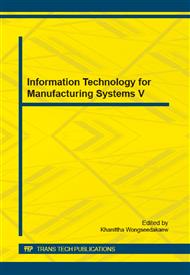p.517
p.522
p.529
p.535
p.540
p.549
p.554
p.560
p.567
Determination of Proper Loading Profiles for Hydro-Mechanical Deep Drawing Process Using FEA
Abstract:
Hydro-mechanical Deep Drawing (HMD) is an advanced manufacturing process developed to form sheet metal blanks into complex shapes with smooth surfaces using hydraulic pressure as an additional source of deformation force. There are many factors affecting the successful production of desired parts using this manufacturing process. The most important factors are the fluid pressure and blank holder force. Having proper values of these parameters during forming has a direct impact on part properties such as drawing ratio and thinning. In order to determine desired the fluid pressure and blank holder force profiles, which are different for every geometry, material and other process conditions, finite element simulations are conducted to save time and cost. Abaqus FEA software is used in this study. In order to define the continuously changing fluid pressure application area on the sheet material, which is not an available module or standard interface of software, sub-programs (sub-routines) are developed to properly and dynamically define the fluid pressure area. Proper, if not optimal, fluid pressure and blank holder force profiles, which allow the formability (LDR) of sheet material to be maximum, were obtained using trial and error method. Maximum thinning values on metal blank were used as a control parameter to determine if selected loading profiles result in the highest LDR with lowest thinning.
Info:
Periodical:
Pages:
540-548
Citation:
Online since:
October 2014
Authors:
Price:
Сopyright:
© 2014 Trans Tech Publications Ltd. All Rights Reserved
Share:
Citation:


